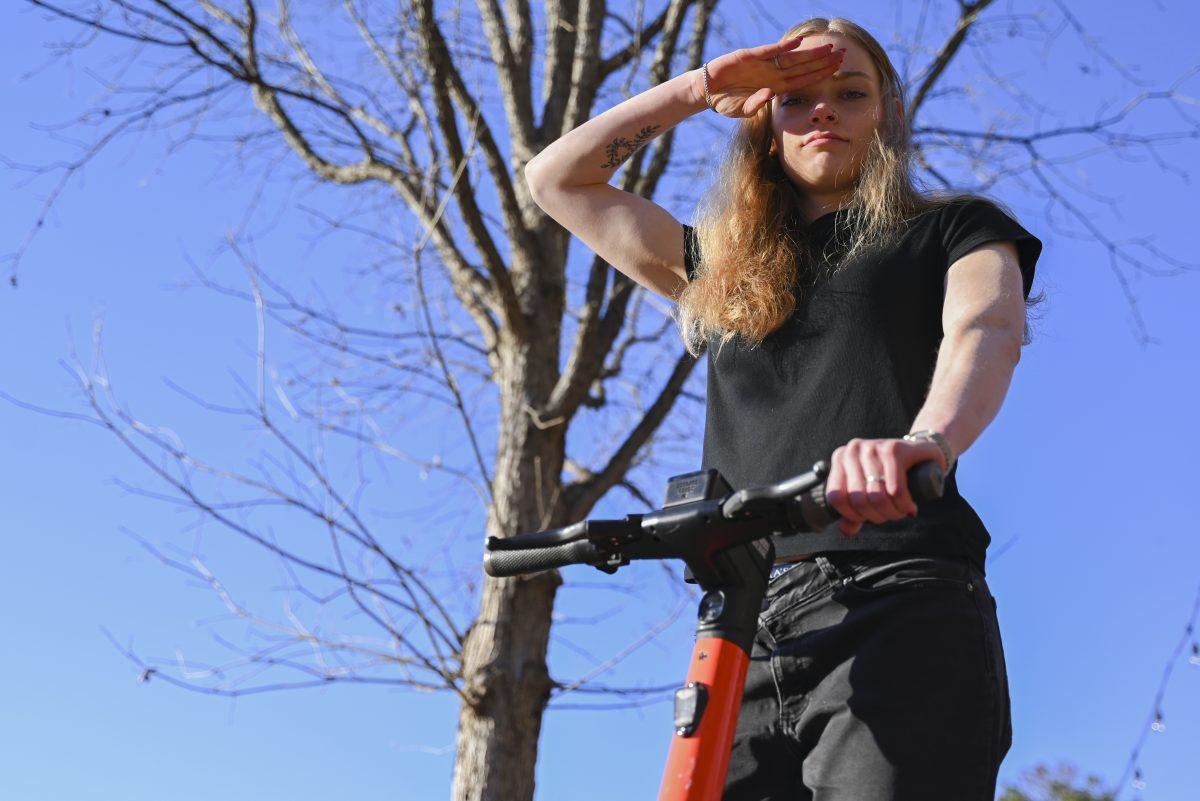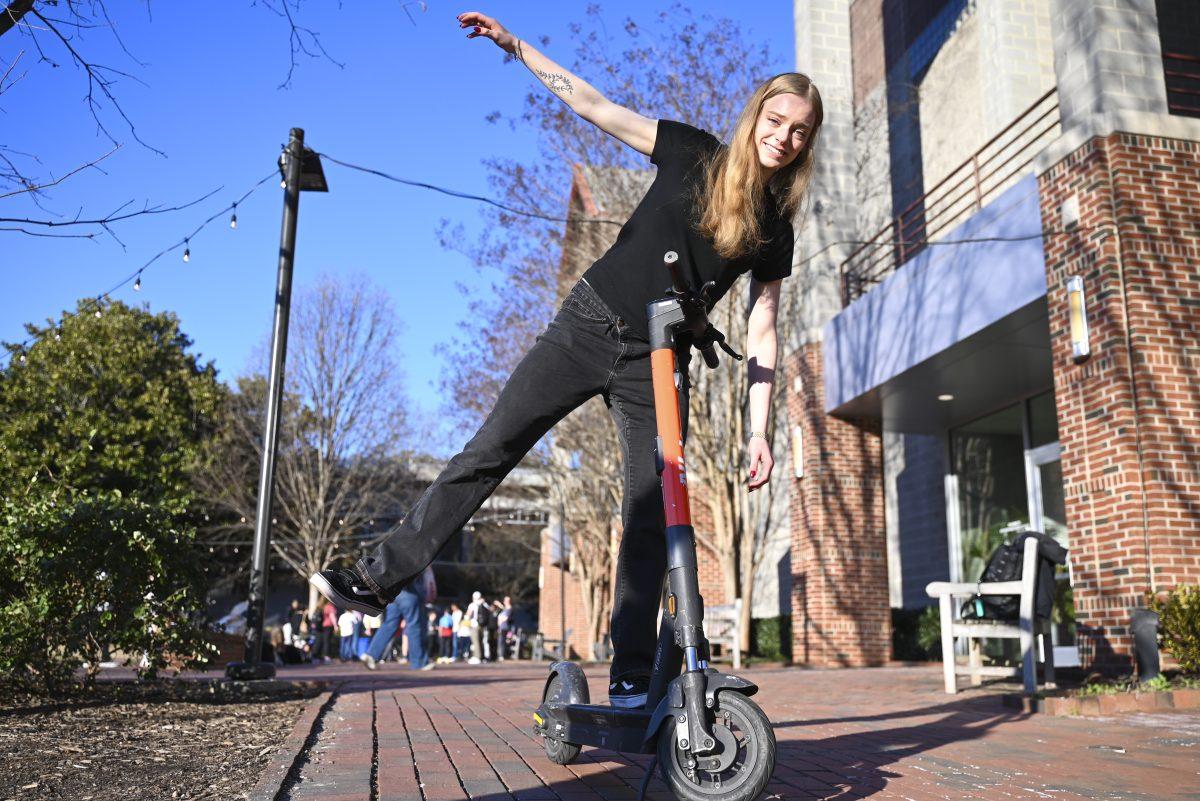Editor’s Note: This is a work of satire. It should not be taken seriously or applied literally.
Electric scooters are indubitably one of the best inventions to have been popularized in the last decade. They provide a unique, compact mode of travel that allows riders to get to their destination quickly without having to fret about finding available parking.
Anyone who has spent time on NC State’s campus in the last few years knows that riding electric scooters has become a highly favored means of transportation, and I’m here to provide a few tips for how to properly ride scooters in an area with heavy foot and vehicular traffic.
First things first, it’s important you don’t wear protective equipment of any kind. You don’t want to come off as a weakling while traversing through campus.
Helmets make it difficult to wear headphones or earbuds while riding and ruin one’s carefree image as a scooterer, which should be one of your foremost concerns when taking one. And you may as well ditch the scooter altogether if you plan on wearing knee or elbow pads.
Next, remember that obeying traffic laws isn’t a priority, seeing as you are not driving a registered vehicle. Stopping at stop signs or red lights is optional; speed limits are more of a suggestion than a maximum.
While most bike riders use hand gestures in lieu of turn signals, feel free to make your turns without warning. Anyone driving behind someone on a scooter knows to give ample space to help facilitate the scooterer’s speedy arrival.
Additionally, passing other cars is totally acceptable, regardless of whether the driver you pass is going the posted speed limit. The cost of added time to one’s trip far outweighs the cost of a potential collision. You may be less visible in a car’s blind spot, but again, it’s a driver’s responsibility to make way for scooters.
Yielding to foot traffic is nonessential because pedestrians should know better than to inconvenience a scooterer by making them wait for a person to cross the street.
According to a traffic law passed by state legislatures in January, a person riding a scooter is not liable for any accidents involving a pedestrian. In fact, the walker responsible for the wreck can face up to a $500 fine for putting the safety of others in jeopardy.
Elvira Knievel, a third-year studying physics, was recently a victim of a head-on collision with a pedestrian while riding her electric scooter on Cates Avenue.
“I was only going 45 miles per hour, and the dude just walked right out in front of me,” Knievel said. “He broke his collarbone, but thankfully my scooter and I were okay.”
Similarly, don’t worry about dismounting from your scooter when going through the tunnels below the railroad tracks. Those traveling by foot are expected to walk closer to the tunnel walls to allow those on scooters to pass through quickly.
Once you arrive at your destination, it’s fine to leave a rental scooter in the middle of the sidewalk. It’s understood that one’s time can’t be wasted on parking the scooter in a location that’s more than five steps away from the front door of a building. People can always walk around it.
If you happen to have your own electric scooter, make sure to purchase a lock so you can tether your wheels to a handrail or fence that’s within a short distance from the entrance of your destination.
You may notice signs around campus telling you that locking a bike or scooter to anything other than a bike rack is prohibited, but that rule only really applies to bikers.
Above all, just remember that your well-being and timely arrival to wherever you’re headed are what matters most. Everyone on campus has an unspoken understanding of how crucial it is to allow those on scooters to get to their destination lickety-split.
Ride like the wind, young scooter riders. Time is money, and here on this campus, you can’t afford to waste a single second.
AJ Toler, a first-year studying psychology, poses with a Spin scooter outside Witherspoon Student Center on Tuesday, Feb. 25, 2025. Spin scooters were brought to campus in 2022, replacing Lime scooters, due to their ability to provide the Transportation department with data regarding traffic patterns.















